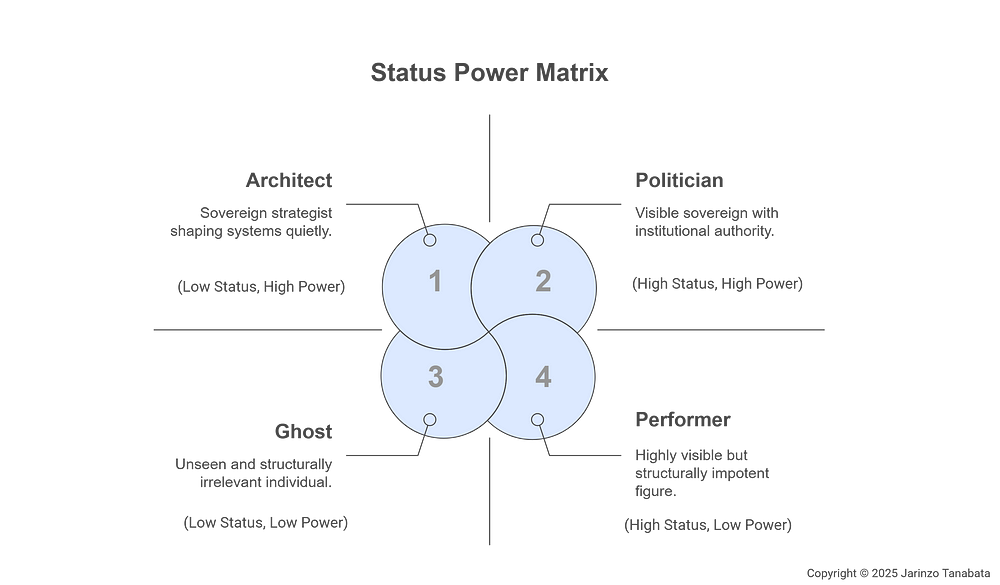Mental Notes 07 - Status-Power Matrix
The Status-Power Matrix is a four-quadrant model that distinguishes between two primary dimensions of social positioning: status and power.
An Excerpted Framework from the Book Strategically Principled by Jarinzo Tanabata
The Status-Power Matrix is a four-quadrant model that distinguishes between two primary dimensions of social positioning: status and power.
Status is perceptual. It is the social signal of relevance — an economy of recognition, visibility, and acclaim. It captures cultural bandwidth, directs attention, and establishes symbolic authority in the public eye.
Power, by contrast, is structural. It is the capacity to shape systems, dictate access, control flows of capital, ideas, and opportunity. It is not a currency of visibility but of design.
Plotted across a dual-axis grid
These dimensions yield four strategic archetypes: the Performer, the Politician, the Ghost, and the Architect. These are not personal identities, but functional roles — systemic configurations within the social lattice. Each quadrant embodies a distinct orientation of agency and perception. The matrix does not describe ethics or popularity; it maps operational agency — the actual ability to effect change in the world versus the social visibility associated with it.
Societies are not composed merely of individuals but of roles but strategic positions within social machinery that either grant or restrict leverage. This distinction between individuals and roles, or more precisely between actors and structural nodes, is foundational to understanding any lasting theory of social power.
Understanding this matrix allows us to decode institutional reality: to discern who truly governs outcomes versus who performs governance; to distinguish narrative authority from systemic control.






